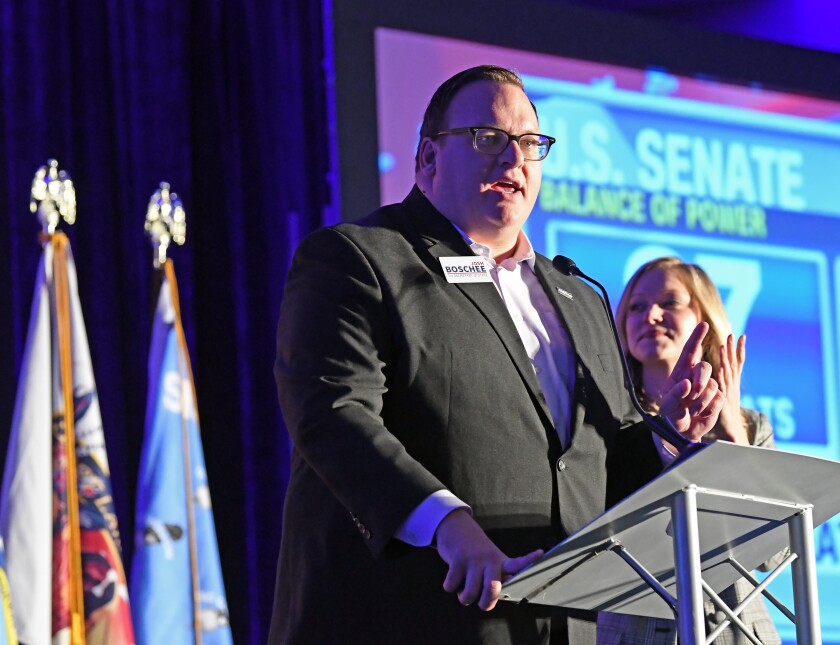BISMARCK — A decade after North Dakota voters overwhelmingly approved the establishment of an oil tax savings account, the state's Legacy Fund holds nearly $7.9 billion. There are as many ideas to spend, save and invest it as there are lawmakers in the Capitol building, but legislative leaders have made it clear that big moves for the fund are likely to come in the next few months.
A group of prominent Republicans have floated a recently slimmed-down $800 million bonding bill that rivals more expensive proposals from Gov. Doug Burgum and Democratic-NPL leaders. All three plans would rely on interest generated by the Legacy Fund to pay back investors, but lawmakers from both parties also are looking to draw the lines for spending the fund's earnings in future years.
A proposal from Dickinson Republican Rep. Mike Lefor would put a hunk of the earnings toward a new fund that flows to a variety of forward-looking projects and programs.
More than a quarter of the money would be dedicated to pay back investors for bonds, but House Bill 1380 also includes funding for:
- highways and roads;
- one-time infrastructure projects;
- new school construction;
- infrastructure and tech loans;
- a public employee retirement fund;
- a behavioral health support fund;
- technical education centers and programs;
- state building maintenance;
- a new clean energy fund;
- higher education research;
- an affordable housing fund;
- and cybersecurity efforts.
A complex algorithm that uses the five-year average balance of the Legacy Fund would determine how much lawmakers can spend each budget cycle. Lefor estimated that roughly $500 million would be available to allocate for the upcoming cycle if his plan were already in place, but under the proposal, money wouldn't start percolating to the new funding streams for two more years.
ADVERTISEMENT
Any earnings from the Legacy Fund not designated for spending through the algorithm would go back into the principal of the fund.

Lefor said his proposed streams of funding are investments in the state that would pay off in the form of taxpayer savings, well-paying jobs and a greater ability to attract new residents. For example, the North Dakota Department of Transportation could wrangle more federal funding for highways if it had the money to match offers at the state level, he said.
Devoting funds to so many different causes also would diversify the state's economy beyond a heavy reliance on the oil and agriculture industries, Lefor said.
At the heart of Lefor's effort is a notion that North Dakotans need to be shown that the Legacy Fund is working to improve their lives.
"I think people are looking for what's next," Lefor said.
House Majority Leader Chet Pollert said he agrees with some of the ideas in Lefor's proposal, but he's concerned that the money breakdown for the streams would be too rigid. The Carrington Republican added that there should be a discussion about putting caps on the amount that accumulates in each bucket.
ADVERTISEMENT
Lefor recognizes that his bill is likely to be amended, noting that it's meant to be "flexible" and "not hardwired." He even suggested that lawmakers could change where the funds go in future legislative sessions.
A separate plan from the other side of the aisle would focus more on direct investments in the people, said House Minority Leader Josh Boschee. The Fargo Democrat has brought forth House Bill 1275 , which would repay investors for bonds and make significant contributions to higher education research, social services, broadband internet and energy infrastructure, workforce development and an arts endowment.
Boschee said his proposal aims to fund critical programs, like paid family leave, early childhood education and job training, that often go unfunded or get cut down.

He added that taking action on the Legacy Fund is long overdue, and lawmakers now feel a pressure to start using money before the voters do it for them via a ballot initiative. During the last budget cycle, some of the fund's earnings were used to balance the state's budget, replenish an education fund and boost a rainy-day fund, but the public wants to realize more benefit from the savings account that was originally created to promote significant long-term projects, he said.
"It's been said in meetings, and I know it's been said in the hallways — many of us that are trying to see how we can maximize the Legacy Fund and put it toward moving North Dakota forward (realize that) if we don't, someone else will," Boschee said.
Neither of the bills has yet been scheduled for a hearing.
ADVERTISEMENT








